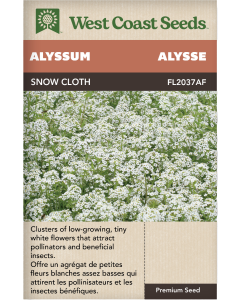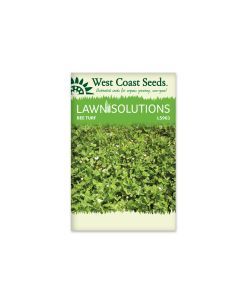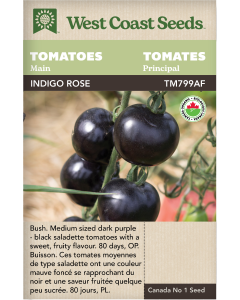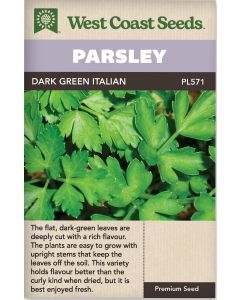Be the first to review this product
PRODUCT DETAILS
SUMMER HARVEST. Caraflex Organic Cabbage seeds are CERTIFIED ORGANIC! Small, very pointed, highly uniform heads that can be planted more densely. Caraflex has tight wrapper leaves that protect the tender, crunchy, sweet interior from weather and pests. Very nice flavour for a summer harvest cabbage. A shape that is becoming ever more popular in Europe and North America. Fresh, sweet, and tender cabbage leaves. These Pointed cabbages tend to be milder and sweeter, and have more tender leaves than round heads. Easier to braise, these cabbages make an excellent alternative to lettuce. Caraflex is an improvement on traditional pointed cabbage types. Has excellent holding capability and firmness. Produces 1.5-2 lb heads , storing up to 8 weeks. Presents well as a baby cabbage. Winner of the RHS Award of Garden Merit.
These seeds are coated with an inert, organically certified layer which helps to minimize clumping in storage and seed sowing machines. The coating is approved by organic certifiers in Canada, the US, EU, and Japan.
Matures in 50 to 65 days. (Hybrid seeds)
- Tender, crunchy, sweet interior
- Small, very pointed, uniform heads
- Tight wrapper leaves
- This shape is popular in Europe
- Matures in 50 days
All About Caraflex Coated Organic
Latin
Brassica oleracea var. capitata. Family: BrassicaceaeDifficulty
Moderately difficultSeason & Zone
Season: Cool season. Exposure: Full-sunTiming
Sow indoors beginning in late winter and transplant outdoors from 2 weeks after the last frost date to early summer. Overwintering cabbage is sown outdoors during July where winters are mild. Optimal soil temperature: 10-30°C (50-85°F). Seeds should germinate in 7-10 days.Starting
When learning how to grow cabbage, sow 3 or 4 seeds per pot, 5mm (¼”) deep, under very bright light. Thin to the strongest plant. Space transplants 45-60cm (18-24″) apart in rows 60-90cm (24-36″) apart.Days to Maturity
From transplant date.Growing
Ideal pH: 6.5-7.0. Cabbage does best in humus-rich soil amended with composted manure. Mix ½ cup complete organic fertilizer into the soil beneath each transplant. If growth slows, side dress with a little more balanced organic fertilizer. Heads of early varieties can split from over-maturity, rapid growth after heavy rain, or irrigation after dry spells. Splits can be delayed by twisting the plant or cultivating deeply next to plants in order to break roots and slow growth. Fall and winter varieties stand in the garden longer without splitting. If direct sown, add 20-25 days to the maturity date.Harvest
Cabbage heads are ready when they’re firm to the touch, and when the interior is fairly dense. Heads will split when they’re allowed to overly mature. Rapid growth due to excess watering and fertility will also cause splitting of the head. Plant early, mid-season and late varieties to spread out your harvest. Late varieties tend to be better for storage or for making sauerkraut. Early (summer harvest) varieties tend not to store as well.Seed Info
In optimum conditions at least 80% of seeds should germinate. Uual seed life: 3 years. Per 100′ row: 200 seeds, per acre: 44M seeds.Diseases
- Purple blotch (Alternaria porri) – Avoid wetting foliage if possible. Water early in the day so plant parts above the ground dry as quickly as possible. Allow for air circulation, and avoid crowding plants. Pull weeds around plants and garden area to increase air circulation. When plants are not wet, remove and destroy affected plant parts. In autumn rake and destroy all fallen or diseased leaves and fruit.
- Clubroot – If soil infested, add lime to raise soil pH to 7.2. Practice strict crop rotation. If that is not possible, remove infested soil and replace with fresh soil. Purchase healthy transplants or start seed in sterile potting mix or fresh ground. Remove and discard or destroy entire infested plants along with immediately surrounding soil and soil clinging to roots.
Pests
- Flea Beetles – Use row covers to help protect plants from early damage. Put in place at planting and remove before temperatures get too hot in mid-summer. Control weeds.
- Cutworms – Control weeds. Cardboard collars around each plant give good protection.
- Cabbage root maggot – White maggot larvae tunnel in and feed on roots of plants. Damage causes wilting early on, death of plants later on. Use row covers to help protect plants from early damage.
- Cabbageworms – Handpick and destroy. Row covers may be useful on small plantings to help protect plants from early damage. Put in place at planting and remove before temperatures get too hot in midsummer.
- Cabbage aphids – A hard stream of water can be used to remove aphids from plants. Wash off with water occasionally as needed early in the day. Check for evidence of natural enemies such as gray-brown or bloated parasitized aphids and the presence of alligator-like larvae of lady beetles and lacewings.
Companion Planting
All Brassicas benefit from chamomile, dill, mint, rosemary, and sage. Avoid planting near eggplants, peppers, potatoes, or tomatoes. These plants in the Solanum group thrive in slightly acidic soil, as does the fungus that causes clubroot.
| Brand | West Coast Seeds |
|---|---|
| Manufacturer Part Number | CB246A |
| UPC | 687704009746 |
| Family | Cabbage |
| Group | Summer |
| Days to Maturity | 50 |
| Certified Organic | Yes |
| Heirloom | No |
| Open Pollinated | No |
| Hybrid | Yes |
| Pack Options | A pack |
| Package Language | English |
| Shipping Type | Seeds |














Login and Registration Form